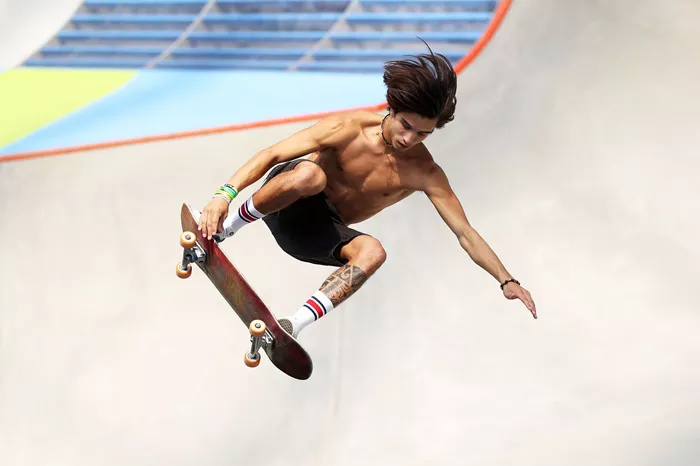Skateboarding is more than just a sport; it’s a lifestyle that combines creativity, skill, and a sense of freedom. Whether you are a beginner or an experienced skater, proper preparation is essential for enjoying the ride and minimizing risks. This article will guide you through everything you need to know to prepare for skateboarding, from choosing the right gear to mastering basic techniques.
Understanding Skateboarding
Before you start skating, it’s important to understand what skateboarding entails. Skateboarding involves riding on a skateboard and performing tricks or stunts. It can be done in various environments, including skate parks, streets, and ramps.
Types of Skateboarding
There are several styles of skateboarding, each with its own unique characteristics:
Street Skating: This involves performing tricks on urban obstacles like stairs, ledges, and rails.
Vert Skating: This style focuses on riding on vertical ramps and performing aerial tricks.
Freestyle Skating: This is about performing tricks on flat ground without the use of ramps or rails.
Downhill Skating: This involves riding downhill at high speeds and often includes longboarding.
Understanding these different styles can help you choose the right equipment and techniques for your skating journey.
Choosing The Right Gear
The right gear is crucial for safety and performance. Here’s what you need to consider when selecting your skateboard and protective equipment.
Selecting a Skateboard
Deck: The skateboard deck is the board itself. Choose a deck that suits your style:
Width: Wider decks (8.0 inches or more) offer stability for street skating, while narrower decks (7.5 to 7.75 inches) are better for technical tricks.
Material: Most decks are mad from maple wood, which provides durability and flexibility.
Trucks: Trucks are the metal parts that connect the wheels to the deck.
Choose trucks that match your deck width for optimal performance.
Wheels: The size and hardness of wheels affect your ride:
Diameter: Smaller wheels (50-54mm) are better for street skating, while larger wheels (55mm+) provide more speed for cruising.
Durometer: Softer wheels (78A-87A) offer better grip on rough surfaces, while harder wheels (88A+) are faster on smooth surfaces.
Bearings: Bearings affect how smoothly your wheels spin. Look for high-quality bearings rated ABEC 5 or higher for better performance.
Protective Gear
Safety should always be a priority when skateboarding. Here’s a list of essential protective gear:
Helmet: A properly fitting helmet can prevent serious head injuries.
Look for helmets certified by safety standards like CPSC or ASTM.
Wrist Guards: These protect your wrists from fractures during falls.
Knee Pads: Knee pads provide cushioning and protection against scrapes and bruises.
Elbow Pads: Elbow pads help prevent injuries to your elbows during falls or impacts.
Shoes: Choose skate shoes with flat soles for better grip and control on the board.
Learning Basic Techniques
Once you have your gear ready, it’s time to learn some essential techniques that will help you get started with skateboarding.
Stance
Your stance is how you position yourself on the skateboard:
Regular Stance: If your left foot is in front, you ride regular.
Goofy Stance: If your right foot is in front, you ride goofy.
To determine your stance, try pushing off with one foot while standing on the board; whichever foot feels more comfortable in front is your stance.
Pushing Off
To start moving, place your back foot on the tail of the board and push off with your front foot:
Stand with your feet shoulder-width apart.
Use your back foot to push down on the tail of the board.
Once you gain some speed, place both feet on the board.
Balancing
Balance is key in skateboarding:
Keep your knees slightly bent.
Lean slightly forward when riding to maintain balance.
Practice riding straight before attempting turns or tricks.
Turning
To turn while skating:
Shift your weight toward the direction you want to go.
Use your shoulders to guide the turn.
Practice carving wide arcs before attempting sharper turns.
Stopping
Knowing how to stop safely is crucial:
Foot Brake: Drag your back foot on the ground to slow down gradually.
Heel Drag: Place one heel over the tail of the board while dragging it along the ground.
Bail Out: If you feel out of control, jump off the board safely onto a soft surface like grass or dirt.
Practicing Safety
Skateboarding can be risky; therefore, practicing safety measures is essential:
Always wear protective gear when skating.
Choose safe environments like skate parks or empty parking lots for practice.
Be aware of your surroundings; watch out for pedestrians and vehicles.
Avoid skating in wet or icy conditions as they increase the risk of slipping.
Finding Your Community
Skateboarding is often more enjoyable when shared with others:
Join Local Skate Parks: Many cities have skate parks where skaters gather to practice and share tips.
Connect Online: Social media platforms have groups dedicated to skateboarding where you can meet other enthusiasts.
Attend Events: Look out for local skate contests or exhibitions; they are great opportunities to learn from experienced skaters.
Setting Goals
Setting achievable goals can keep you motivated as you progress in skateboarding:
Start with basic skills like pushing off and balancing.
Aim to learn new tricks gradually—don’t rush into complex moves too soon.
Track your progress by keeping a journal of skills learned or tricks attempted.
Conclusion
Preparing for skateboarding involves understanding the sport, selecting appropriate gear, learning basic techniques, practicing safety measures, finding community support, and setting goals for improvement. With dedication and practice, anyone can enjoy this exhilarating sport while minimizing risks associated with it.
Whether you’re cruising down the street or mastering tricks at a park, remember that skateboarding should be fun! Enjoy every moment on your board and embrace the journey ahead as you develop your skills and style in this dynamic sport!
Related topics:
- How to Make Knee Pads for Skateboarding: A Step-by-Step Guide
- What Injuries Can You Get from Skateboarding?
- What Protective Gear for Skateboarding?

